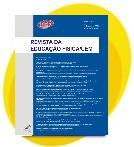Examining offensive tactical actions performed by youth soccer players with different competitive contexts
Abstract
The study examined offensive tactical actions performed by U-15 soccer players with different competitive levels. 34 matches played by three different levels of U-15 soccer clubs were used; brazilian national (BN), brazilian regional (BR), and italian national (IN). Five categories where used to analyze the soccer offensive actions: "number of players involved" (NJ), “ball touches” (NT), “passes” (NP), “corridor changes” (NTC), and “duration of ball possession” (TRA); the results were coded using Match Vision Studio® software. The BN presented higher values in all five offensive categories (p < 0.05) when compared to the IN. Multinomial regression evidenced relative contributions of NJ and NP on the chances of results in the BN. The increase of one player involved in the offensive action decreases by 84% the chances of “total success” with respect to “unsuccessful” (p < 0.05). The performance of each additional pass increases 4.9 times the chance of the play ending in “total success” and 4.7 times (p < 0.05) in “partial success” when compared to the “unsuccessful” category. The NJ in the action and the NP have a direct influence on the outcome of the offensive actions of the BN.
Downloads
Copyright (c) 2020 Journal of Physical Education/UEM

This work is licensed under a Creative Commons Attribution-NonCommercial-NoDerivatives 4.0 International License.
• Authors retain the copyright and full publishing rights without restrictions.

This work is licensed under a Creative Commons Attribution 4.0 International License.













_1502.jpg)











